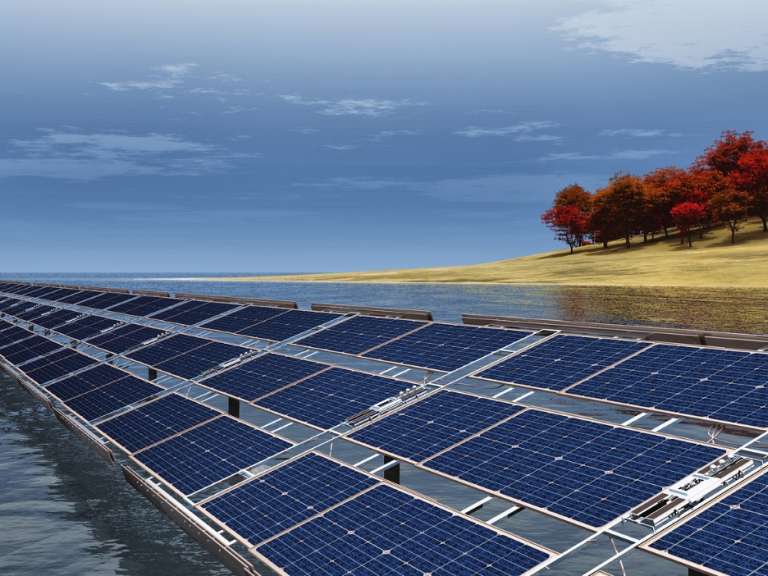Microgrid power system architecture is a growing trend. It involves discrete units that are independent of the main electricity grid and consist of a variety of generation assets and local distribution. It's often associated with renewable energy; however, conventional generation also has a critical role to play in microgrid power systems.
While the term "microgrid" has multiple definitions, in this context it centers on "islanded" locations with no significant connection to a central electricity transmission system, such as military operating bases and remote or island communities. But microgrids also have industrial and commercial applications, such as mining or pulp and paper. They offer a number of advantages in these contexts, including increased reliability of power supply, lower infrastructure capex, and potentially lower opex costs. There are possible environmental benefits, too, with the cost-effective opportunity to move toward more distributed and lower-carbon energy alternatives in many off-grid applications.
Ensuring Stability
A major challenge for all microgrid scenarios is the need to precisely balance available electrical supply with instantaneous changes in demand. Thus, the microgrid environment presents unique challenges. It must fulfill various power demand requirements—such as flexibility, availability, and reliability—in a very constrained geographical grid. In contrast to a larger, interconnected grid system, such as the U.K.'s National Grid or the Electric Reliability Council of Texas (ERCOT), even small changes in supply and demand can have a major impact on microgrid power system stability. This is because in the relatively small microgrid world, even minor events have a disproportionately large impact. By its very nature, an interconnected grid is better equipped to absorb any single failure across a multitude of available assets.
There is also increasing reliance on renewable energy in many microgrid applications, notably those dependent on expensive imported fuels. The inherent variability of technologies, such as wind and solar, represents another challenge for microgrid operators, where reliability of supply is often the primary objective. Indeed, for industrial and commercial applications, reliability is perhaps of paramount importance, as any kind of failure could halt production—an extremely costly scenario. The microgrid environment, therefore, compounds the challenges associated with variable supply and demand seen on larger networks.
Demanding Flexibility
In a microgrid power system, each of the few stations connected has to be very flexible both in terms of its relationship with the others and in meeting changing demand requirements. In the microgrid world, larger generation assets (500 MW or more) are a far less practical solution, as ramping them up to full power from anything less than a hot start situation can take several hours. For large steam units, ramping down can take perhaps five times longer. Furthermore, excessive stop–start cycles on larger machines can have a major impact on service intervals and make their use in rapid power-demand modulation more challenging.
The flexibility needed for smaller grids, where every household has an appreciable impact when it turns on the lights or turns off the stove, is simply not available from larger power-generation assets. This is due to the thermal inertia associated with the larger assets that are found in more typical power grid applications. Microgrid power-generation assets must respond to both varying amounts of demand and variable supply from renewables, placing a premium on fast-acting reserve power. Thus, the ability to ramp up and down and cope with multiple stop and start cycles predicates the installation of multiple smaller and more flexible generation units.
Aeroderivatives and Reciprocating Engines
Aeroderivative machines—essentially ultra-reliable jet engines bolted to a generator—are a much smaller asset of up to around 120 MW in capacity. As they have much smaller thermal inertia than a heavy-duty gas turbine, these units are much more flexible. Those kinds of gas- or liquid-fueled assets are able to act as a buffer to enable additional renewable energy capacity. Similarly, smaller reciprocating engines of around 5–10 MW are typically used in microgrid power systems and then "daisy-chained" if more capacity is needed. Distributed generation assets can also reduce the likelihood of capacity constraints on the transmission and distribution network of the microgrid and prevent grid congestion. Finally, for remote locations without easy access to natural gas, smaller, heavy-duty gas turbines are used for combined heat and power applications, and/or for fuel flexibility, providing district heat during the winter and peak power supply during the hot summer months.
Microgrids are not necessarily a new trend but are becoming increasingly prominent. In a recent report, Navigant projected the global microgrid market to grow from 1.4 GW in 2015 to 7.6 GW in 2024 under a base scenario. Key drivers for this growth include the rapid decline in the cost of renewables as well as the increasing demand for rural electrification projects. Traditional hardwired network infrastructure and its high investment costs are being avoided as remote communities set up local power grids and industrial and commercial operations do not connect to national transmission networks. Instead, a greater focus is being placed on distributed power and energy supply architecture that holds reliability and flexibility as its central requirements. For microgrid power systems, more distributed, smaller, and flexible assets are key to economy, stability, and reliability.
